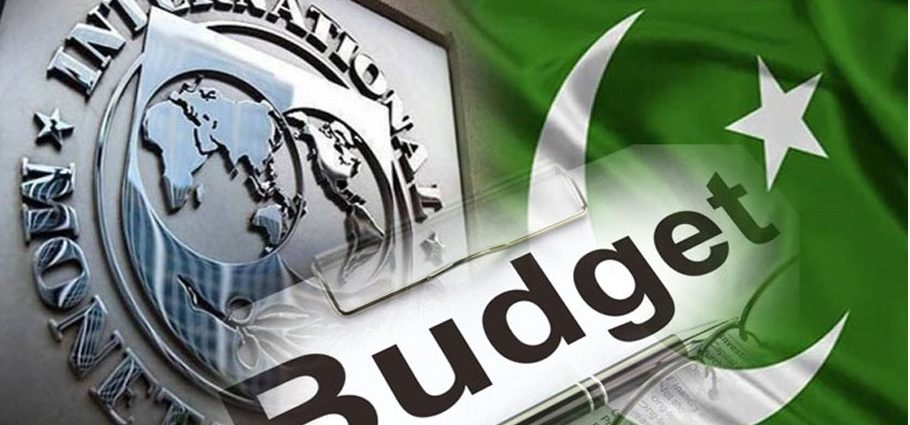Pakistan’s federal budget deficit skyrocketed to a record Rs6.7 trillion in the last fiscal year, breaching the target by a wide margin, as spending on debt servicing and defence needs was 59% more than the net income of the centre.
The federal government spent over Rs7.4 trillion on debt servicing and defence compared to its net income of Rs4.6 trillion, a gap of Rs2.76 trillion between just two heads.
The coalition government not only missed its budget targets but it also failed to restrict fiscal operations to the level agreed with the International Monetary Fund (IMF) in February this year, when it had slapped new taxes on people in the name of narrowing the deficit.
Another alarming fact was that the finance ministry did not know the source of Rs.425 billion worth of spending, which was shown as “statistical discrepancy” in the fiscal operations summary the ministry released on Thursday.
The federal government exceeded the budget deficit target by 47%, or Rs.2.1 trillion, which skyrocketed to Rs6.68 trillion in fiscal year 2022-23 that ended on June 30. The target was Rs4.54 trillion.
FY.23 was one of the worst years in terms of fiscal operations as the coalition government undertook many steps which were not in line with prudent fiscal management.
Compared to the preceding year, the federal deficit was higher by Rs1.1 trillion, or nearly one-fifth, according to the provisional results compiled by the Ministry of Finance. As a result, the Pakistan Democratic Movement (PDM) government added Rs.18.5 trillion to the public debt in just 15 months, which was more than the debt accumulated by its arch-rival Pakistan Tehreek-e-Insaf in its three-and-a-half-year tenure.
Gross public debt jumped from Rs.44.4 trillion in March 2022 to Rs.62.9 trillion by the end of fiscal year 2022-23.
In terms of the size of economy, the federal budget deficit was equal to 7.9% of gross domestic product (GDP).
The disappointing results may also carry adverse implications for fiscal operations in the current fiscal year and it may not be easy to contain growing expenses, particularly on debt servicing.
During the last fiscal year, the federal government’s total expenditures shot up to Rs.11.3 trillion, exceeding the budget target by Rs.1.75 trillion, or over 18%.
Interest expenses reached Rs5.83 trillion, which was Rs.1.83 trillion, or 48%, higher than the budget estimate. For the current fiscal year, the government has budgeted Rs.7.3 trillion for debt servicing, which now appears unrealistic due to high inflation and the consequent increase in interest rate.
The federal current expenditures increased to Rs.10.9 trillion in the last fiscal year, breaching the budget target by Rs2 trillion. This will have implications for current year’s current expenditure target of Rs.13.3 trillion, largely due to higher interest payment cost.
Interest payments were 25% more than the net federal government revenue of Rs4.7 trillion. This should be a matter of grave concern as the federal government’s net income was about Rs.1.17 trillion less than the cost of interest payments.
Everything that the government of former prime minister Shehbaz Sharif did was through borrowing, including laptop schemes, building bridges, paying subsidies and salaries, and bearing the cost of 85 ministers, advisers and special assistants.
The IMF had estimated the debt servicing cost at Rs.5.57 trillion just in February this year. In fiscal year 2021-22, the country had made Rs3.2 trillion in interest payments, which almost doubled in a year.
Development spending stood at Rs.743 billion against the target of Rs.727 billion due to the last government’s increasing focus on parliamentarians’ schemes and other initiatives of the then PM.
Under the IMF programme, Pakistan was committed to generating a primary budget surplus of 0.2% of GDP, or Rs153 billion, in the last fiscal year. Figures showed that the government incurred a deficit of Rs690 billion, or 0.8% of GDP.
Provincial governments threw a surplus of only Rs.155 billion against the budget target of Rs.750 billion.
Tax collection by the Federal Board of Revenue (FBR) remained at Rs.7.169 trillion against the target of Rs7.670 trillion and in spite of imposing a mini-budget.
Non-tax revenues amounted to Rs.1.71 trillion against the annual target of Rs1.935 trillion. The main reason behind missing the non-tax revenue goal was the unrealistic petroleum levy target. The collection of petroleum levy came in at Rs580 billion against the target of Rs.855 billion.
The State Bank shared a profit of Rs.371 billion with the federal government against the target of Rs.300 billion.
As a result, the gross federal revenue receipts amounted to Rs8.9 trillion, which was Rs525 billion less than the target. The federal government’s total net income after transferring provincial shares stood at just Rs4.67 trillion, lower by Rs376 billion from the annual target.
The federal government transferred Rs.4.2 trillion to provinces as their share in federal taxes, which was also lower than the budgeted amount due to less-than-targeted collection by the FBR.
After incorporating the cash surplus of over Rs.155 billion achieved by the provincial governments, the overall deficit of the country stood at Rs.6.52 trillion, or 7.7% of GDP.

